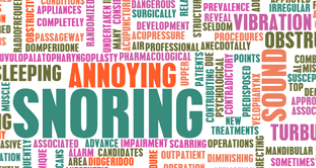
Mucormycosis - All You Need To Know About
What is Mucormycosis?
Mucormycosis is the name of a fungal infection, which is opportunistic and rarely seen in the general population. The most affected are people who have any form of immunocompromise. But when you are immunocompromised, your immune system's defenses are low, affecting its ability to fight off infections and diseases. These include diabetes mellitus, or some forms of cancer, or people who are on steroid therapy for any other problem. Mucormycosis has become more relevant of late because of the COVID pandemic. A large part of the treatment of COVID involves the infusion of steroids, which continues beyond the clinical period of the disease. Typically, people that continue to take steroids as a part of the COVID treatment or even after clinical recovery could develop this opportunistic fungal infection called Mucormycosis.
Who is the worst affected?
The worst affected people are the ones that contract the COVID COVID-19 infection and are already diabetic. Invariably, the disease pictures back while they are admitted to the hospital or during home quarantine. Sometimes, treating COVID might be a priority to the treating physician, and for that reason, they often tend to include a steroid. The patient’s sugar level shoots up typically within two to three weeks of this steroid intake. It can culminate in an immunocompromised condition. Here, the fungal elements have superiority, and they cause a clinical infection called Mucormycosis. The age groups vary. However, elders with diabetes are the most affected. Obesity is also rising among youngsters, and they are contracting Covid as well. They do not have a known history of diabetes. But, when you check their sugar levels, it shows 350 - 400 and above. People detected with diabetes before the COVID infection have an increased predisposition to this infection.
Are patients recovered from Covid are prone to complications due to excessive usage of steroids?
Yes, that is true. So, now what is happening is that this has become like a double-edged sword for us. You need to give steroids for the treatment of COVID. However, with the continuous use of steroids, patients are now showing mucor infection. It has become so rampant, and more than two to three patients are calling in from different eye hospitals, saying that they have a loss of vision. They also reported nose block or nose discharge.
Why is Mucormycosis alarming?
Mucormycosis is very alarming because it is an invasive form of fungus. There are invasive and non-invasive fungi. The occurrence of non-invasive fungus was much more treatable because they do not have a propensity to spread very fast. The hallmark of mucor is that it is an invasive fungus that spreads through blood channels. It has what we call a vascular invasion. What happens is that, for example, post-COVID, a patient says there is some nose block, or there is some discharge or a bloodstain. Within the next 12 to 24 hours, the patient develops a swelling around the eyeball. It is so rapid that it quickly goes into the blood vessels around the eyes, and the eyes start swelling up. It leads to visual disturbances and fixation of the eyeball. And, if you are not quick to identify them, it can prove to be dangerous as the eyes are close to the brain. If we do not identify quickly, this vascular invasion will proceed further to the internal carotid artery. It is a pivotal branch of the common carotid artery, supplying several parts of the head with blood and brain. Then in no time patient will experience a stroke. When these fungi form clots within the blood vessels, they tend to behave like a stroke. There are chances you will not be able to revive the patient. The main reason we are worried about mucor is the rapidity with which it spreads. This nature of rapid spread is because of vascular invasiveness.
Are people with diabetes vulnerable?
Diabetic people are the most vulnerable group. Physicians should have extreme caution while using steroids. Avoid steroids for patients having mild diseases managed at home or even at the hospital. We need to do an expectant or watchful treatment by the avoidance of steroids.
The symptoms of mucor include one-sided nose block, bloodstain, brown-colored secretion from the nose accompanied with swelling of the cheeks, slow progressive swelling of the eyeball, headache, decrease in vision, and then eventually, it can lead to stroke or hemiplegia. Educate patients about the symptoms as it will help in the early detection of the condition.
Some people with Mucormycosis have reported a loss of eyesight. Why does this happen?
Mucormycosis is very alarming because it is an invasive form of fungus. There are invasive and non-invasive fungi. The occurrence of non-invasive fungus was much more treatable because they do not have a propensity to spread very fast. The hallmark of mucor is that it is an invasive fungus that spreads through blood channels. It has what we call a vascular invasion. What happens is that, for example, post-COVID, a patient says there is some nose block, or there is some discharge or a bloodstain. Within the next 12 to 24 hours, the patient develops a swelling around the eyeball. It is so rapid that it quickly goes into the blood vessels around the eyes, and the eyes start swelling up. It leads to visual disturbances and fixation of the eyeball. And, if you are not quick to identify them, it can prove to be dangerous as the eyes are close to the brain. If we do not identify quickly, this vascular invasion will proceed further to the internal carotid artery. It is a pivotal branch of the common carotid artery, supplying several parts of the head with blood and brain. Then in no time patient will experience a stroke. When these fungi form clots within the blood vessels, they tend to behave like a stroke. There are chances you will not be able to revive the patient. The main reason we are worried about mucor is the rapidity with which it spreads. This nature of rapid spread is because of vascular invasiveness.

















